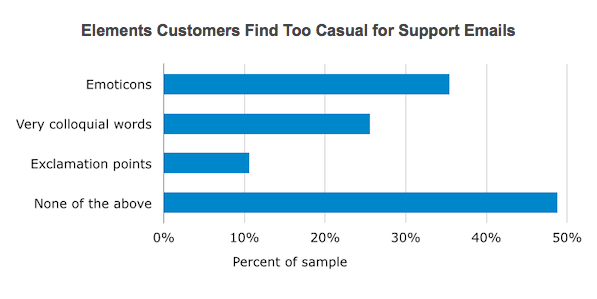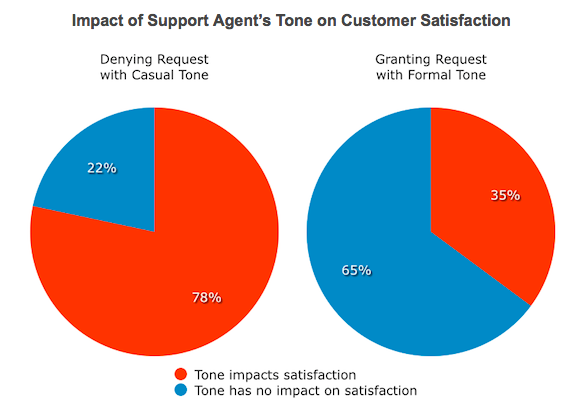
Survey Reveals The Best Tone of Voice to Take with Customers
Have you ever read an email, Facebook message or a tweet and had a hard time interpreting the tone? It can be tricky to figure out the attitude behind a digital message.
Tone is especially important for businesses that use email or social media to offer customer support. Customer support emails and messages come in many forms. Some small businesses send emails to communicate order related activities like shipping delays or overbooked services. Some use email or respond to messages on social media to troubleshoot problems and offer support or solutions.
As a small business, you have to choose your words and punctuation wisely to set the right tone. To help you craft emails with tone in mind, Software Advice, a company that helps small business owners find the right software, conducted a survey on this topic.
“We were looking to help customer service professionals understand the impact of written tone in email,” says Jay Ivey, market research associate with Software Advice.
The survey offers some great insight to help small business owners handle online customer service. With Ivey’s help, we breakdown the data and offer tips you can implement.
Casual or formal?
When offering customer support, do customers prefer a casual or formal tone? According to the study, 65% of customers prefer a casual tone to a formal one. This held true over a wide range of ages.
Ivey suggests using friendly, personable language in neutral situations. Taking a casual tone may help customers see your business as more personable, which can improve the relationship you have with your audience.
What’s casual and what’s too casual?
So what exactly does casual mean, are there any specific elements that go too far such as an emoticon (smiley face)?
Software Advice asked participants if emoticons, colloquial words or exclamation points were too casual. For the most part, participants are okay with casual email elements, with 49% giving all of these elements a green light. Here’s a breakdown of the results:
Local San Francisco startup/online florist, BloomThat is known for their excellent online customer service and friendly tone of voice. Check out their Twitter feed to get an idea as to how they handle customer service inquiries or complaints – Usually with a digital smile!
Tone should depend on the situation
While most customers want to keep their email conversation light and casual, it’s not appropriate for all situations. Your tone will impact your customer’s satisfaction, so it’s important to match your tone to the news that you’re about to deliver.
According to the survey, if you need to deny a claim and do so with an overly casual tone, 78% of participants say it will negatively impact customer satisfaction.
On the other hand, if you grant a claim or request using an overly formal tone, 65% of participants say it will negatively impact customer satisfaction.
Take a look at the pie charts below to see how your tone in these two situations can impact satisfaction.
“Always strive to understand your customers’ likely emotional state,” Ivey says. “Adapt your word choice and tone accordingly. For instance, be especially judicious about using an informal tone in potentially sensitive situations, such as denying a refund.”
Again, it’s about finding a balance between casual and professional.
The point of a customer service is to listen and offer solutions. The best way to do that is by creating “humanized” messages. Customers want to know that your business cares about them and there’s a person listening to them on the other end. The study shows that you should always consider their feelings and create support emails that offer a casual yet professional tone.
© 2015 – 2018, Contributing Author. All rights reserved.




